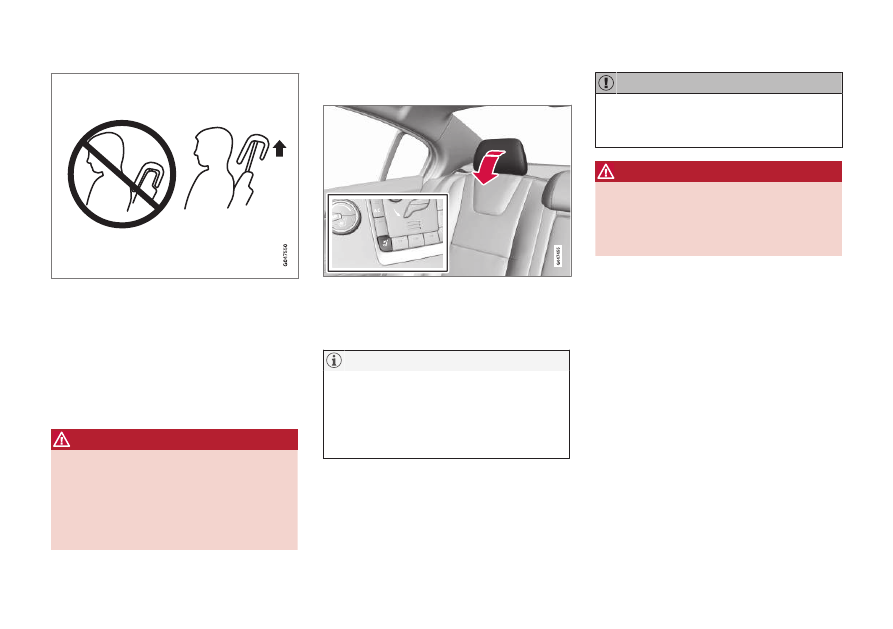Volvo S60 (2018 year). Manual - part 5

||
INSTRUMENTS AND CONTROLS
80
The center head restraint should be adjusted
according to the passenger's height. The
restraint should be carefully adjusted to support
the occupant's head.
•
Pull the head restraint up as required.
•
To lower, press the button at the base of the
head restraint’s left support while pressing
the head restrain down carefully.
WARNING
The center rear seat head restraint should
only be in its lowest position when this seat is
NOT occupied. When the center seat is occu-
pied, the head restraint must be correctly
adjusted to the passenger’s height so that, if
possible, the entire back of the head is cov-
ered.
Automatically folding down the rear
seat’s outboard head restraints
1. The ignition must be in mode II.
2. Press the button to lower the rear head
restraints for improved visibility.
•
The head restraint must be returned to
the upright position manually.
•
The outboard head restraints cannot be
folded down on models that are not
equipped with this button.
The rear head restraints should not be kept
folded down for prolonged periods. This could
result in pressure marks in leather upholstery.
WARNING
For safety reasons, no one should be allowed
to sit in the outboard rear seat positions if the
head restraints are folded down. If these posi-
tions are occupied, the head restraints should
be in the upright (fixed) position.
Related information
•
•
Front seats – power seat (p. 76)
•